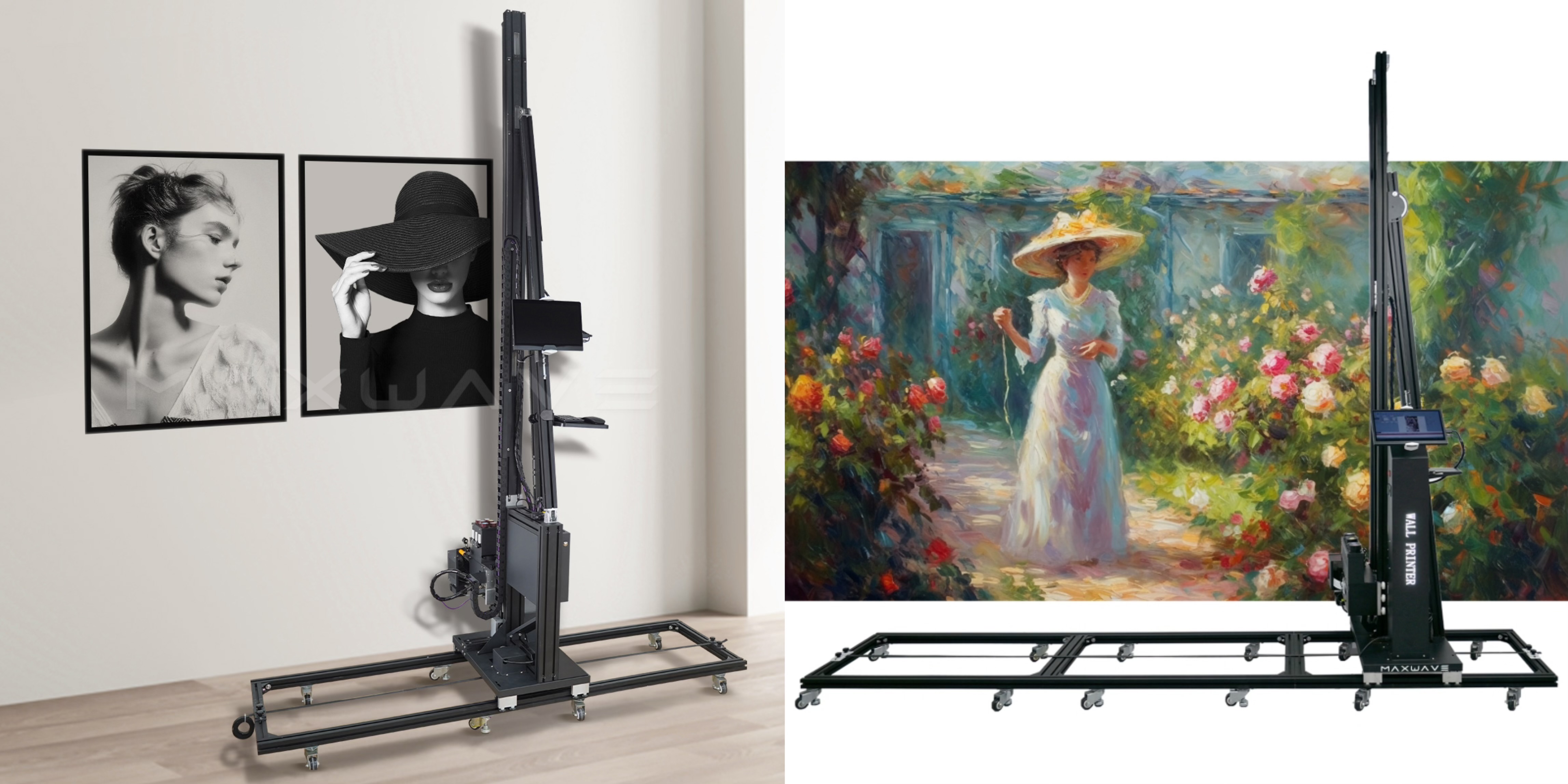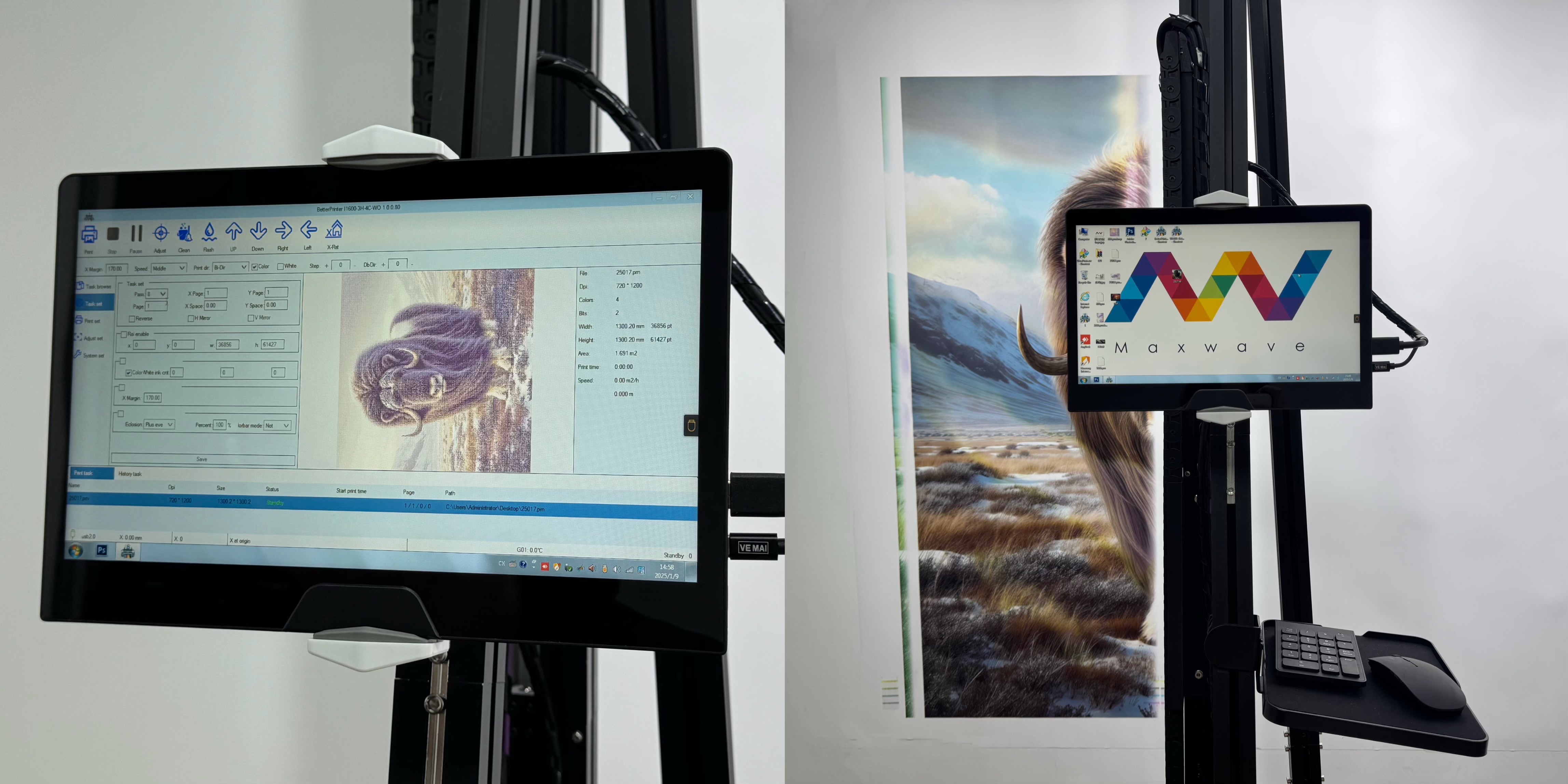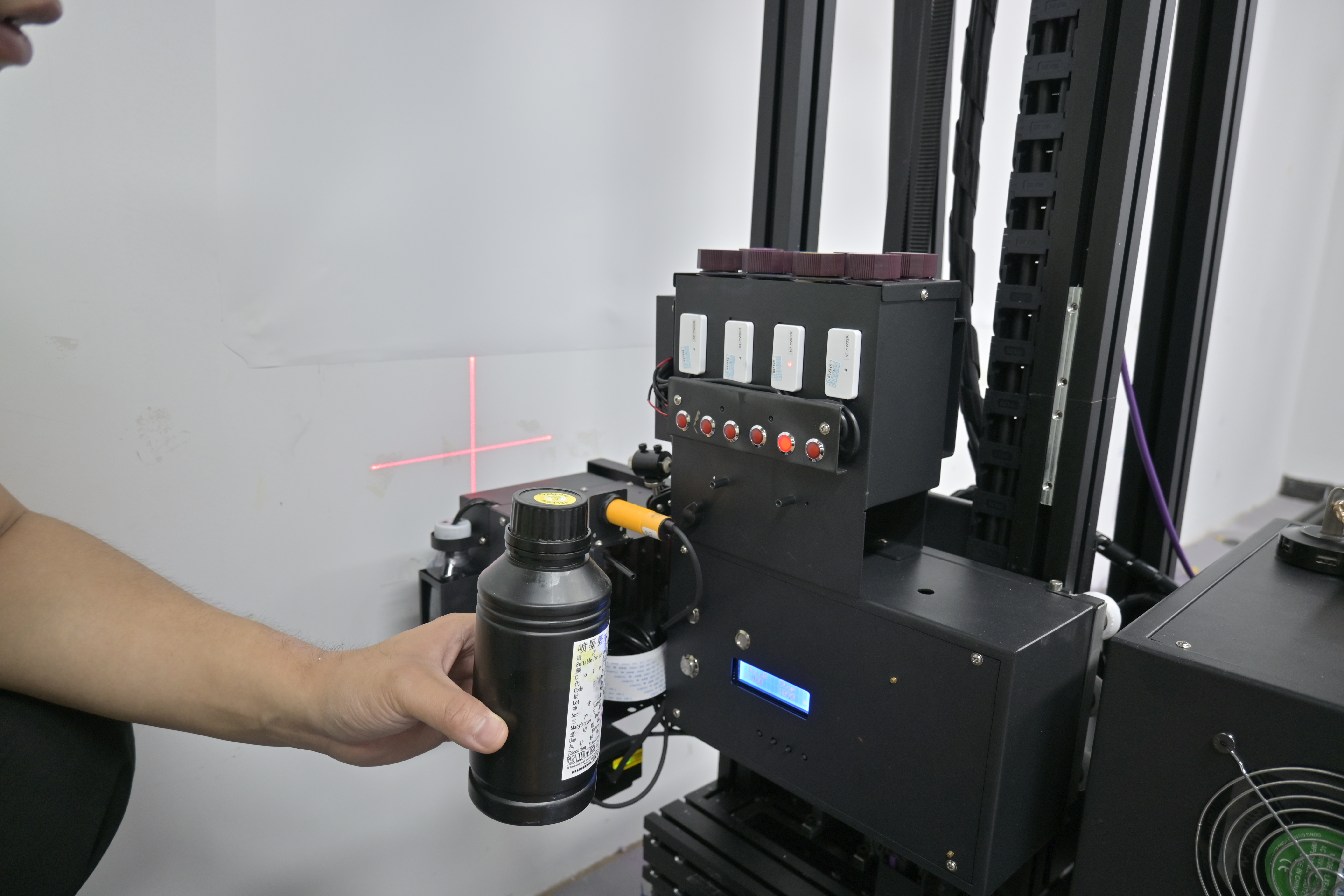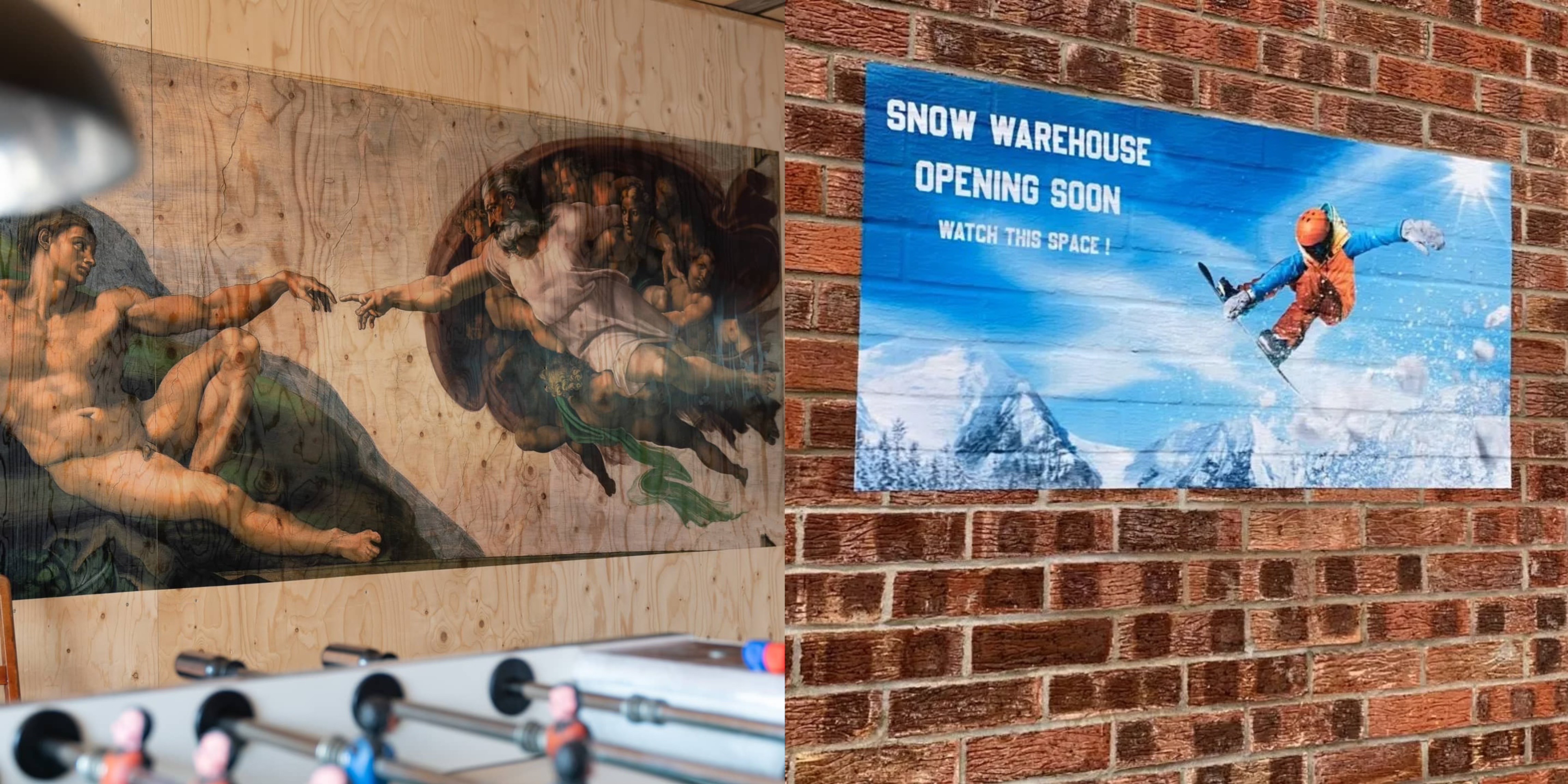Picking the right wall printer isn’t just about specs—it’s about making your creative vision a reality with ease and efficiency. Should you choose the solid, no-nonsense one-piece machine, or the nimble, adaptable split-body system? Each has its strengths and quirks that can make all the difference on your job site. Let’s break down these two powerhouse designs to help you find the perfect match for your next masterpiece.
Comparing Wall Printers: Portability and Job Site Flexibility
From my experience, the portability and flexibility of a wall printer are critical. The differences between one-piece and split-body (modular) designs are night and day.
Portability
One-piece wall printers are integrated units that typically weigh 50–80 kg or more, making them difficult to transport—especially through narrow hallways, doorways, or staircases. Moving them usually requires at least two people and often a large van or specialized vehicle. Because of their size and weight, these machines are best suited for fixed locations such as studios or workshops where frequent relocation isn’t necessary.
Split-body (modular) wall printers are designed for easy transport, with each module weighing just 10–25 kg—light enough for one person to carry. They break down into compact parts that fit in carrying bags and can be loaded into the trunk of a small car like a Prius or Civic. Setup takes 5–30 minutes, and with practice, as little as 5 minutes. Models like the WallPen split version are perfect for on-site work in tight spaces.
Job Site Flexibility
I’ve seen that one-piece designs create problems with site flexibility:
– The bulky frames don’t fit through standard doors or elevators. This limits your access to jobs in tall buildings or tight spaces.
– Moving these big machines over uneven ground often requires extra track adjustments or supports. This makes the job setup more of a hassle.
– Because of this, I see these printers used most for large-volume projects where the machine stays put.
In my work, split-body wall art printers are amazing in flexible situations:
– Since they break down, I can get them into spaces with size limits, like narrow stairwells, small elevators, or crowded trade show floors.
– Setup and teardown are fast and simple. I recommend these machines for temporary jobs, pop-up events, and regular on-site client work.
– I also like that many modular models offer battery power. This means I don’t have to search for an outlet, which helps a lot for outdoor and remote jobs.
Summary of Practical Impacts
- If you often change job sites, need to fit your gear through small entrances, or work alone, I strongly recommend a split-body wall printer. The parts are light, they pack into a small space, and the setup is quick. These features make them ideal for mobile work.
- One-piece wall printers offer more stability, but you lose mobility and flexibility. In my opinion, they are best for a dedicated workshop focused on high-volume printing where the machine will not be moved.
Comparing Setup and Calibration Times for Wall Printers
When you’re looking at wall printing machines, you need to think about setup and calibration time. From my experience, this time directly affects how smoothly your workday goes. Here’s my breakdown of how one-piece and split-body printers stack up in real-world use.
One-Piece Wall Printer Setup & Calibration
Pre-assembled wall printers come with factory-installed rails and motion systems, often pre-calibrated for quick startup. With some experience, you can go from unloading to printing in under 30 minutes in a standard room, with minimal on-site adjustments. In tighter spaces, allow an extra 10–20 minutes for precise alignment due to the machine’s weight. Efficiency improves with repeat jobs, making these printers ideal for studios or fixed locations where setups are consistent.
Split-Body (Modular) Wall Printer Setup & Calibration
Modular wall printers need manual assembly and calibration, including aligning the gantry, rails, and print head. Initial setup can take 40–90 minutes for new users, with steps like leveling, axis alignment, and test prints. While setup is slower, the flexible design fits tight or uneven spaces, and experienced teams can reduce setup time to 30–45 minutes.
Based on my experience, you should carefully consider these setup time differences. Your choice will depend on your business model and the types of projects you plan to take on.
My Guide to Printing on Complex and Uneven Walls
In my line of work, a wall printer machine‘s ability to handle different surfaces is crucial. This matters most when I am dealing with difficult or varied job sites.
One-Piece Wall Printers: Best for Flat, Open Spaces
Printers with a solid frame work best on flat, smooth surfaces like new office walls or exhibition panels. Their lack of flexibility makes them unsuitable for uneven or textured walls, often resulting in blurry or distorted prints. Obstacles like pipes or columns require moving the entire machine, which wastes time and risks misalignment. These printers are ideal for controlled environments where walls are clear and consistent.
Special Examples: MaxWave one-piece wall printers are equipped with adjustable bases, allowing them to compensate for uneven floors while still delivering smooth, stable print results—solving a key issue found in traditional integrated machines.
Split-Body Wall Printers: Adaptable to Irregular Surfaces and Obstacles
Split-body wall printers have a modular design that easily navigates obstacles like windows and beams without moving the whole machine. Each module adjusts to wall depth, ensuring clear prints on uneven surfaces. Models like the MaxWave GP200 series come equipped with advanced intelligent sensor systems, enabling precise height adjustments and consistent print quality even on highly uneven walls. I prefer them for decorative buildings, outdoor murals, and historic sites with irregular walls and obstacles.
Stability and Upkeep: Which Wall Printer Design Is More Durable?
When you pick between a one-piece and a split-body (modular) digital wall printer, I suggest you focus on two things: how stable it is and how much upkeep it needs. These points will directly impact your work time, your costs over the long run, and the effort you put into keeping the machine in good shape.
One-Piece Wall Printers: Robust and Low Maintenance
One-piece wall printers generally offer greater structural stability due to their rigid, integrated frames. This solid build minimizes vibrations during printing, resulting in consistent, high-quality output over time. Their fewer movable parts also mean there are fewer components that can wear out or require adjustment, often translating to lower routine maintenance. However, because they are heavier and less portable, any mechanical issues can be more challenging and time-consuming to repair on-site.
Split-Body Wall Printers: Flexible but Require Regular Calibration
On the other hand, split-body (modular) wall printers prioritize flexibility and portability with multiple detachable components. While this modularity makes them easier to transport and adapt to complex surfaces, it also introduces more joints and moving parts, which may increase the risk of mechanical wear or misalignment if not carefully maintained. Regular calibration and part inspection are essential to maintain print accuracy and machine longevity. That said, the modular design allows for quick replacement or upgrading of individual parts, potentially reducing downtime compared to repairing an entire integrated unit.
Summary: Choosing Between Durability and Versatility
-
If you value robustness and minimal maintenance, one-piece printers tend to be more durable in stable environments.
-
If you need versatility and easy serviceability, split-body printers offer maintainability advantages despite requiring more frequent calibration.
Finding Your Fit: Which Wall Printer Business Model Is for You?
From my experience, picking between a one-piece and a split-body (modular) wall painting printer is a key decision. I suggest you think about your business goals and the kinds of places you’ll be working. Each design offers unique benefits for different markets and jobs.
Best Uses for One-Piece Wall Printers
Fixed Shops with High Print Volume
These printers are ideal for businesses with a fixed workspace, like large studios or creative agencies. Perfect for big, ongoing projects—such as hotel chains, museum murals, schools, or corporate branding—they offer stable, reliable printing of large designs. With quick setup and consistent results, they’re great for repeat jobs in easily accessible spaces where the machine rarely needs to be moved.
Focus on the Commercial Market
I believe one-piece units suit professionals handling commercial interiors, which demand the highest quality and largest prints. As of 2023, the global wall printing market is valued at around \$2.5 billion, with commercial projects representing a significant share.
Permanent Workshops
For operators who want to print a lot with little fuss, I recommend this model. The all-in-one, stationary design means less downtime. Maintenance is also much simpler.
Best Uses for Split-Body (Modular) Wall Printers
Mobile and On-Demand Work
These are great for freelancers, startups, and small companies. You can easily carry the equipment to different job sites. This is a huge help in tight spaces like apartments, narrow stairways, or at events. One person can handle the transport and setup. You can take on jobs in places where a big printer just wouldn’t fit.
Growth in Freelance and DIY Markets
I’ve seen a big increase in people wanting these models. More affordable, portable printers and online tutorials are making them popular with DIY fans and freelancers. This trend is very strong in growing areas like Asia-Pacific. People there value low costs and machines that can do many different things.
A Real-World Example
In China, split-body printers are very successful. The construction and design industries there have many small, independent businesses that need them. They are a common choice for painting murals on-site. This includes small apartments or tall buildings with difficult-to-reach areas.
Summary
Choosing the right wall printer can transform your projects from good to unforgettable. Whether you need the rock-solid reliability of a one-piece unit for large-scale, repeat jobs or the unmatched flexibility of a split-body printer to tackle tricky surfaces and tight spaces, the perfect tool is out there waiting for you. Invest wisely, and you’ll not only boost your productivity but also unlock new creative possibilities that set your work apart. Ready to elevate your printing game? The right wall printer is your next step—don’t settle for less. Ready to learn more? Contact us now for expert advice on wall printers.





